DEFINITION OF TERMS:
- KEYSTONE means they are listed by National Wildlife Federation as core plants for a wildlife garden in my ecoregion (Ecoregion 8).
- NOT QUITE NATIVE means they are slightly out of range but adjacent to NYS as determined by GoBotany and NY Flora Atlas.
- Otherwise the plant is a NY-native or native to the area noted.
NOT QUITE NATIVE: Dutchman’s pipevine (Aristolochia macrophylla)
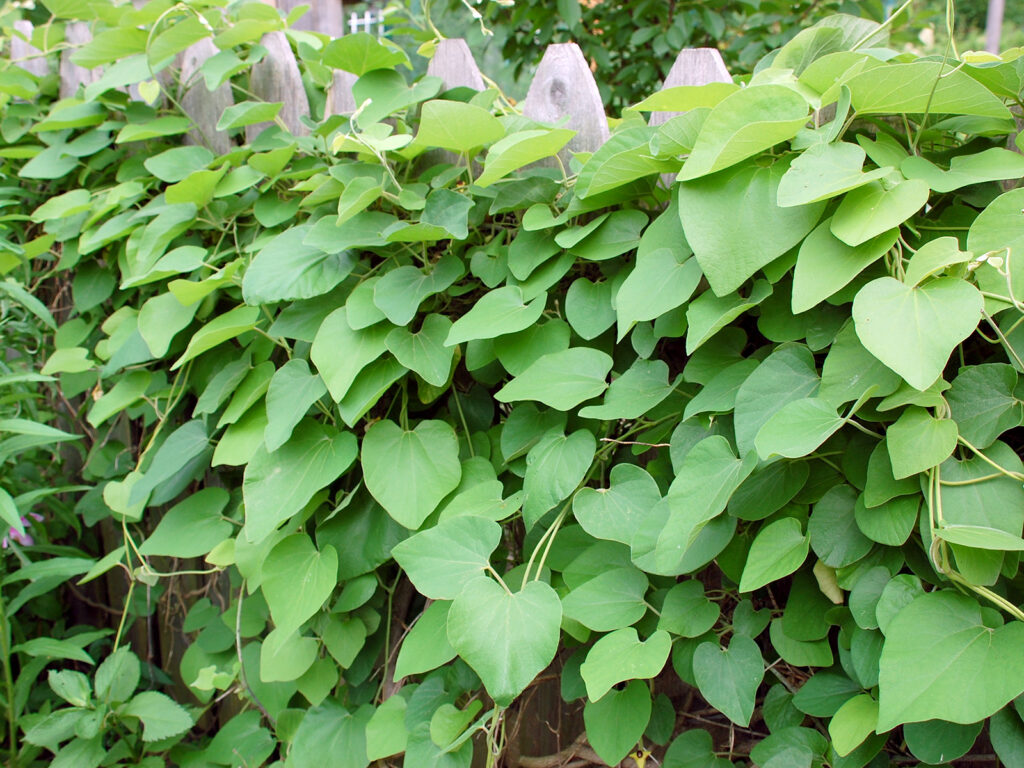
I planted this early on in my habitat gardening career. I was looking for host plants for butterflies, and this was an obvious one for pipevine swallowtail butterflies. I hadn’t yet come to think about whether there were any pipevine swallowtail butterflies in CNY that would use this plant.
I then noticed that the pipevine swallowtail wasn’t listed in the Onondaga County sightings on the Butterflies and Moths of North America (BAMONA) list, so I felt foolish even having this plant. We are in its range, but being a habitat oasis in the middle of a habitat desert, there is a limited number of butterflies that find our garden.
But then I was surprised to see a pipevine swallowtail actually did visit this plant (confirmed by the North American Butterfly Association)! In the meantime, it’s a beautiful vine, though I work keep it in bounds since it climbs into the apple tree, the elderberry, and the grape arbor.
The pipevine’s flower is intriguing and is the reason for the vine’s name. The flowers aren’t really noticeable — you have to look for them — but they’re fun to see.
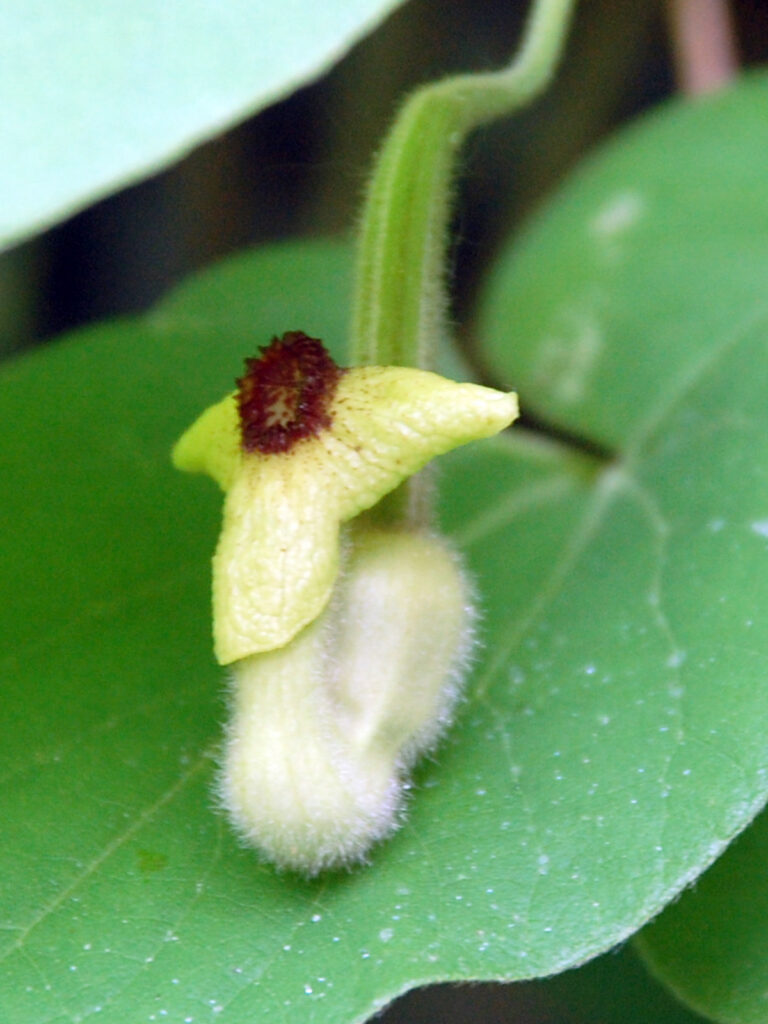
Larval host: Pipevine swallowtail
- Learn more:
- Wildflower Center: Pipevine
NOT QUITE NATIVE: Trumpet vine (Campsis radicans ‘Flava’)
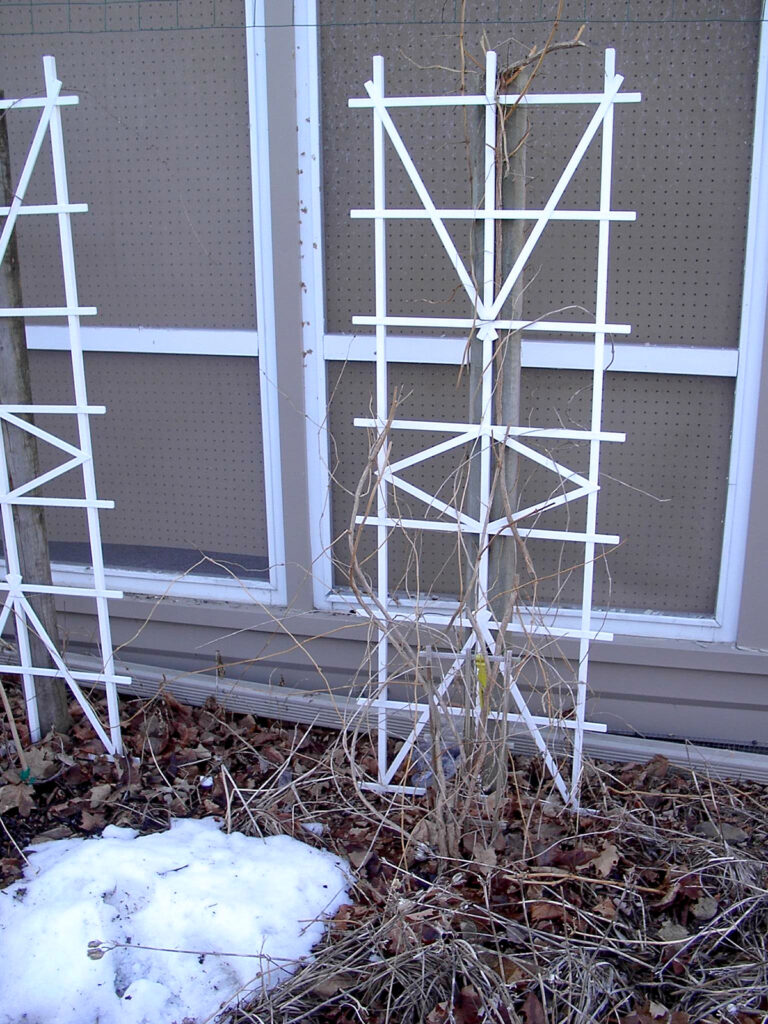
Trumpet vine — not the same as trumpet honeysuckle (below) — is a vigorous grower to say the least. We bought two (what were we thinking?) and planted them on a trellis in front of our screen porch (indeed, what on earth were we thinking??).
Soon, they took off and started attaching themselves to the porch, so we transplanted them next to the fence. Since then, we’ve tried to remove some, but half-heartedly I admit.
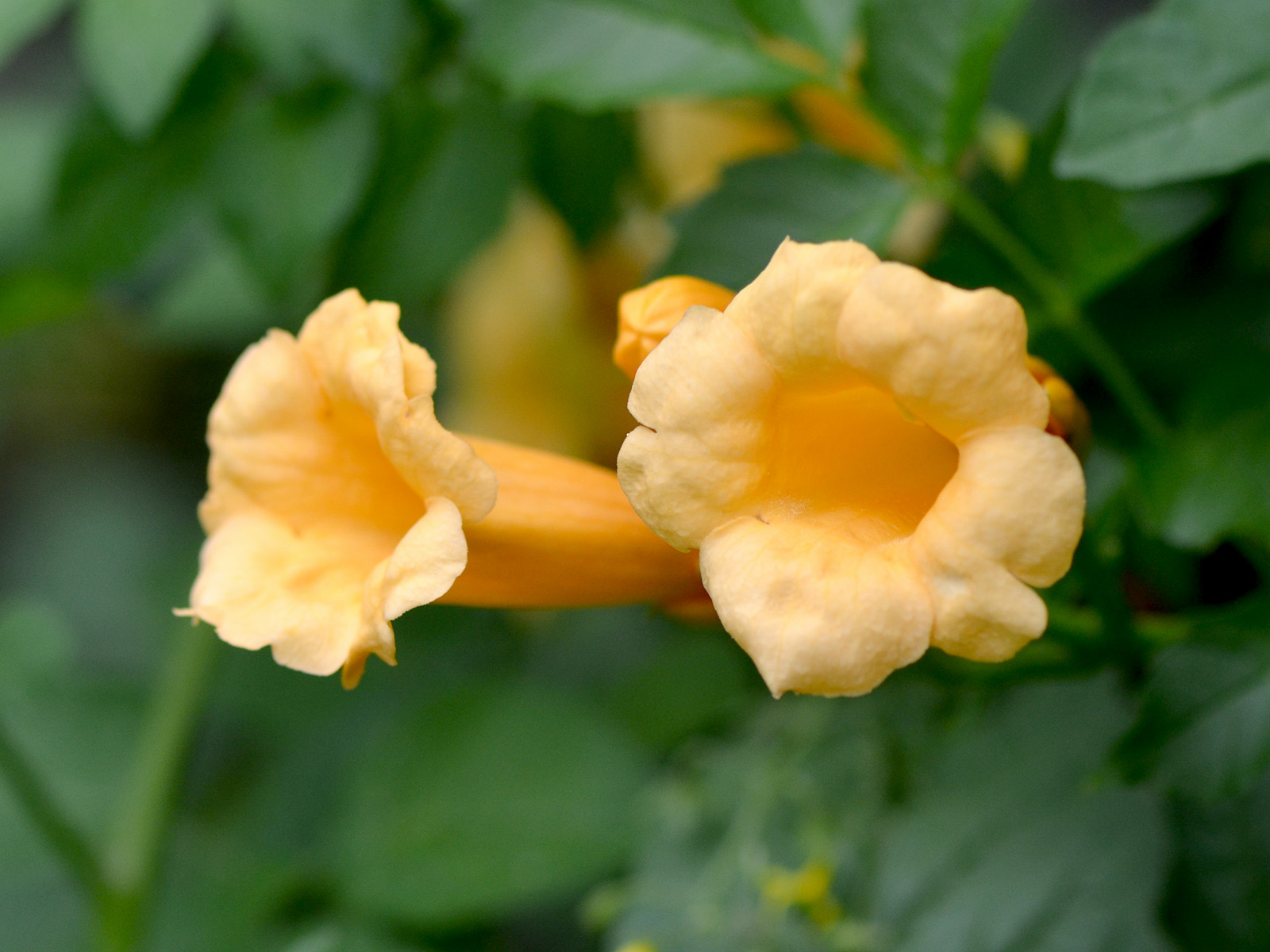
We were surprised to see that the remnants of the vine along the back fence actually flowered.
Trumpet vine is a fantastic hummingbird plant. I just wish I had a better place for it — i.e. a lot of space. Ideally, I’d like to grow it up a large post. Our plan is to have it grow it up our sugar maple tree when it meets its demise. It’s perfectly capable of doing so! Meanwhile, I’m trying to keep it in bounds, or maybe we need to try to eliminate these and buy one when the time comes. We wish now that we had gotten the usual orange-red variety, though, not this yellow cultivar, the only one for sale when I went to a local conventional nursery years ago.
Wildlife: Hummingbirds, long tongued bees
Larval host: Trumpet vine sphinx moth
Deer resistance: Moderate
- Learn more:
- Wildflower Center: Trumpet vine
Virgin’s bower (Clematis virginiana)
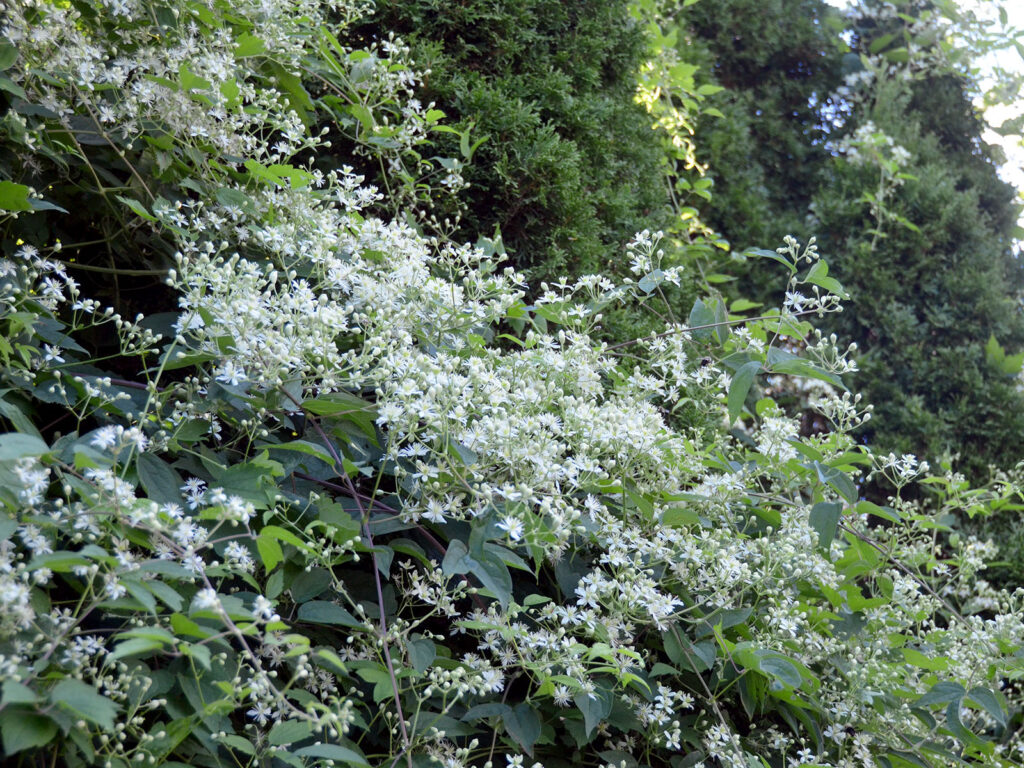
This plant really took off and covers the fence and nearby arborvitae with clouds of white flowers! It’s a very light-weight vine and doesn’t seem to harm the arborvitae at all. I love seeing all the little insects and bees hovering around the flowers.
After a few years, we discovered that it’s creating what I think are seedling plants — more than we’d like — so I’m belatedly trying to limit it to just one or two plants.
CAUTION: There is a look-alike non-native invasive Clematis terniflora, whose flowers are similar, but whose leaves are rounder. What’s worse is that nurseries often mislabel them apparently. Another difference is that the invasive variety is fragrant, but the native one isn’t — unfortunate, but not a good enough reason to choose a non-native invasive plant …
Wildlife: Hummingbirds, bees, butterflies
- Learn more:
- Wildflower Center: Virgin’s bower
- NRCS et al.: Mistaken Identity? pp. 26-27 – Virgin’s bower native/invasive
- Wisconsin Master Gardener: Sweet autumn clematis and Virgin’s bower
Hairy honeysuckle (Lonicera hirsuta)
We love the hairy honeysuckle, called “hairy” because of its hairy leaves.
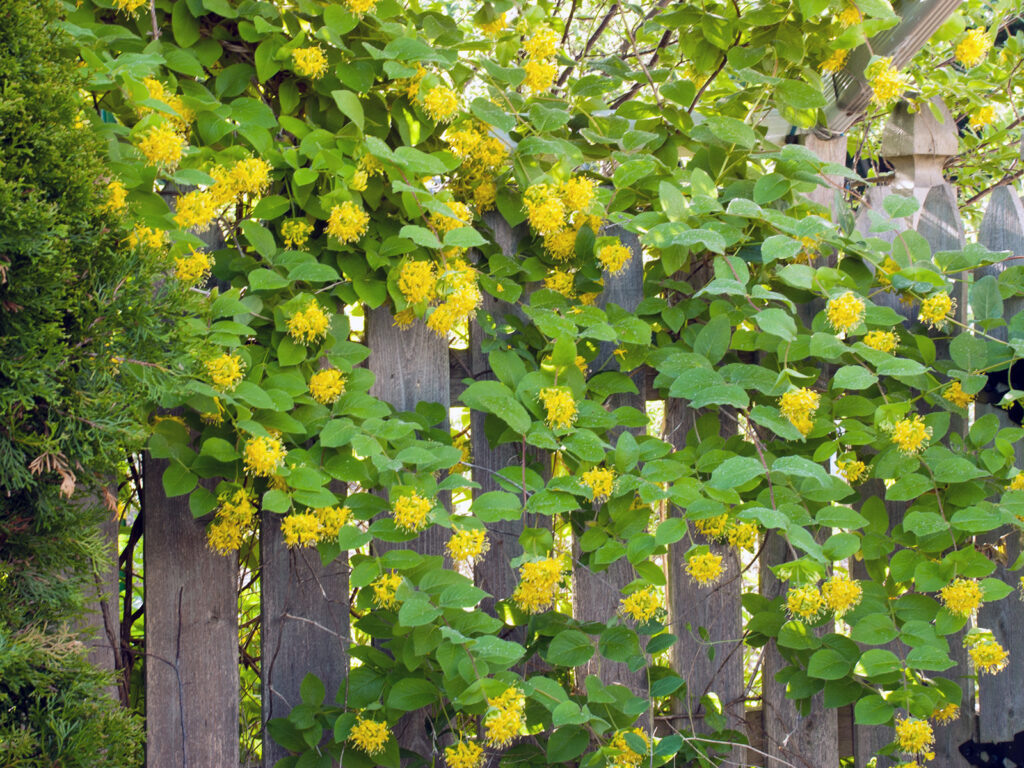
This isn’t as commonly available as the coral trumpet honeysuckle, so I was lucky to have found this one at the Native Plant Trust (formerly New England Wildflower Society) nursery at Garden in the Woods.
It’s growing very well, probably because we have the alkaline soil it prefers. It’s also supposed to like moist soil. Since it’s located behind our rain barrels, it probably gets the overflow. At least that’s what we hoped for when we planted it there.
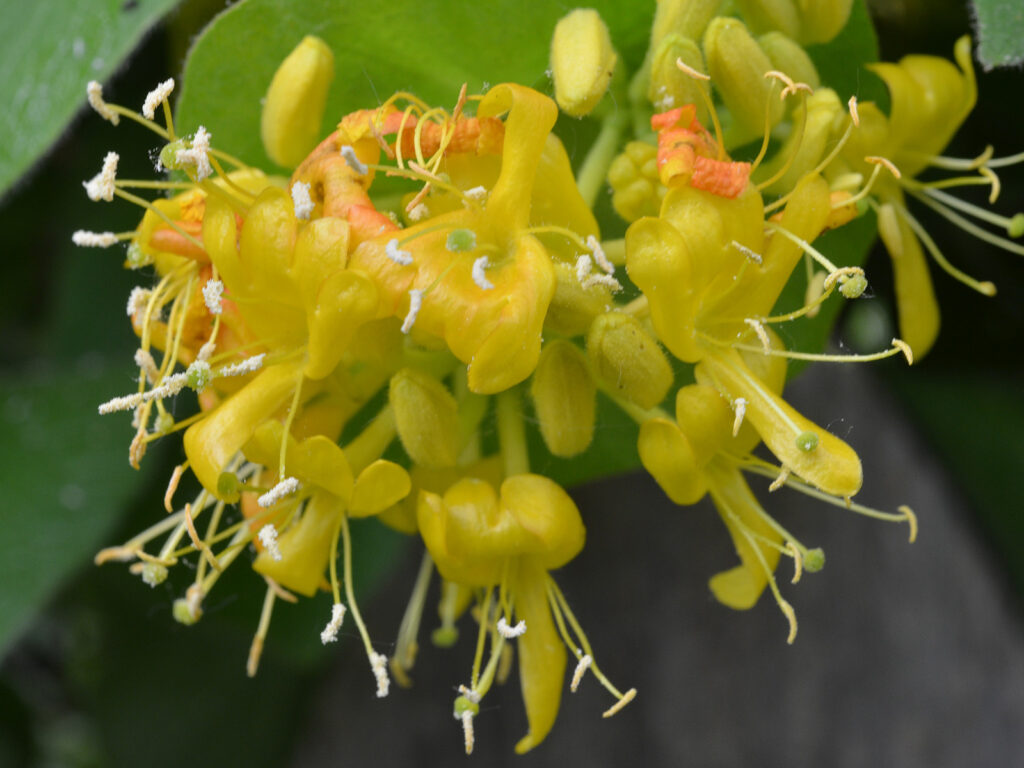
We love its buttery yellow flowers, and the bees do, too.
** SPECIAL VALUE TO BUMBLE BEES **
- Learn more:
- Wildflower Center: Hairy honeysuckle
Trumpet honeysuckle (Lonicera sempervirens)

This is one of our favorite plants, partly because the hummingbirds like it, but partly because it’s just a beautiful plant. Give it some sun, and it blooms through much of the season, and when it does finish blooming, it has attractive reddish berries. It will grow in the shade but may not bloom as long.
We have five or six of these throughout the yard. I often find little plantlets rooted in the ground and they seem to transplant well, so I stick them in next to the fence wherever I find a little space. They’re supposed to be planted in moist soil, but we haven’t had any trouble growing them in our regular soil.
The coral color is beautiful, as is the shape of the flowers, and we like the grayish-green (“glaucous”) foliage, too. With such a beautiful native honeysuckle, why do people buy (and sell) the non-native, invasive honeysuckles?
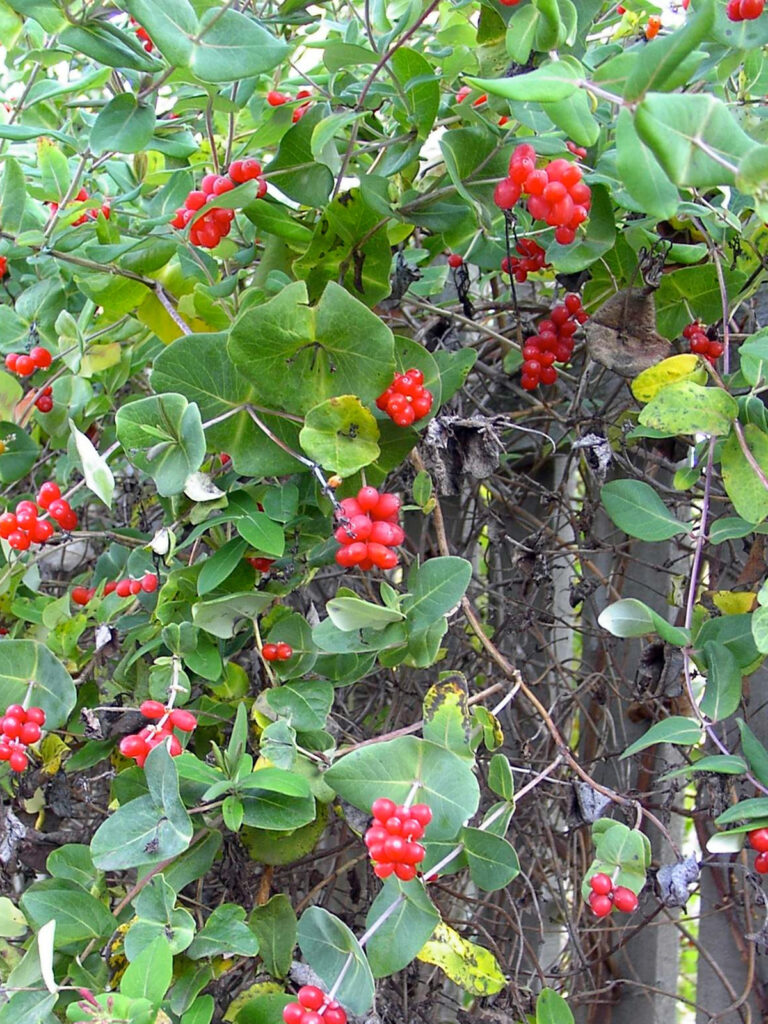
Here are the honeysuckle berries, which don’t appear until late in the season. I don’t know if anything eats the berries, but they’re attractive.
Wildlife: Nectar for hummingbirds, bees, butterflies; fruits for birds
Larval host: Spring azure, snowberry clearwing moth
** SPECIAL VALUE TO BUMBLE BEES **
- Learn more:
- Wildflower Center: Trumpet honeysuckle
- Doug Tallamy: Exploring Native Honeysuckle with Doug Tallamy (2-min. video)
Virginia creeper (Parthenocissus quinquefolia)
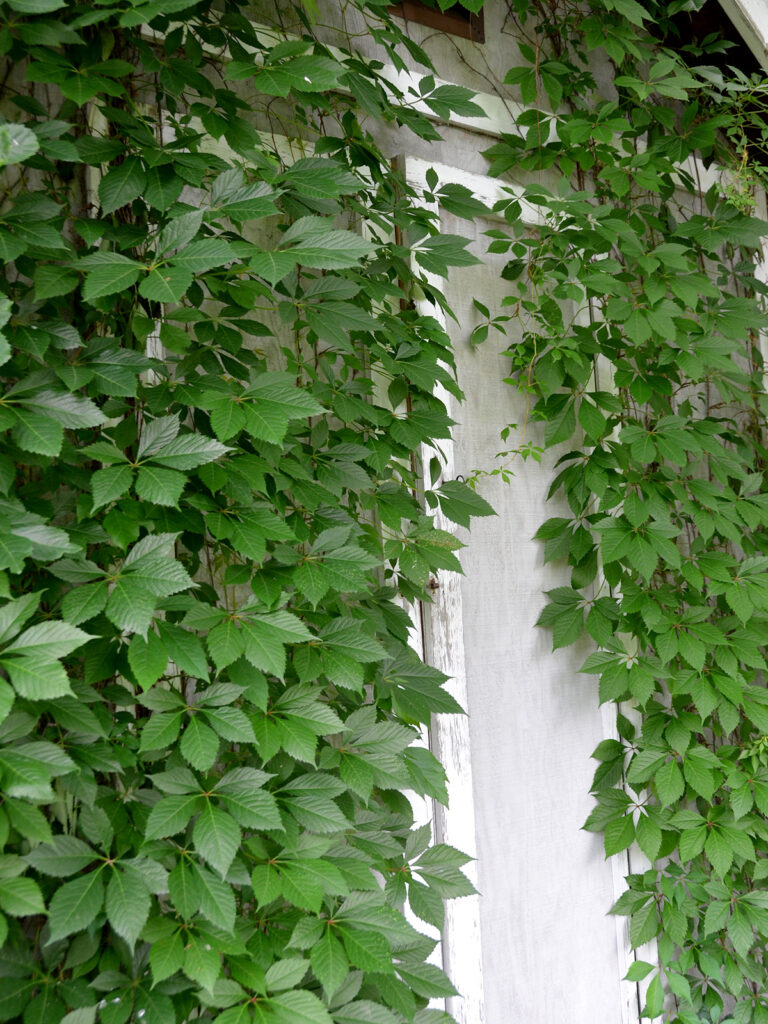
Virginia creeper creeps both horizontally and vertically. Although it’s a good berrying plant for birds, people can enjoy the foliage, nice and green in the summer and brilliant red in the fall.
At first glance, it can sometimes be mistaken for poison ivy, BUT it has five leaves (thus, quinquefolia), not poison ivy’s three.
Remember:
“Leaves of three, let it be; leaves of five, let it thrive.”
(NOTE: Poison ivy is also a habitat-worthy native, but it’s not suitable for a small yard.)
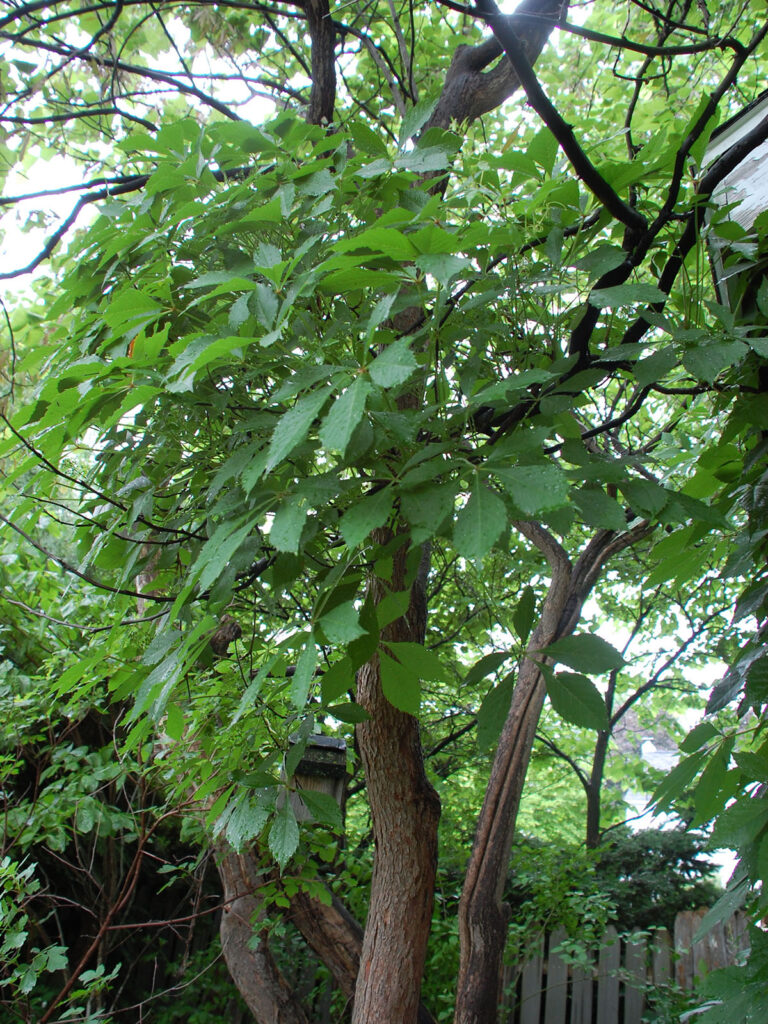
Virginia creeper can indeed creep. Here it is climbing a redbud tree. It also had crept up into our apple tree.
I made a policy that it can grow only on and around the shed in the back. I just pull out any bits I see anywhere else (i.e. where I had thought it was a good idea to plant it in the past…) Once I established this rule, I don’t seem to find it growing independently anywhere else.
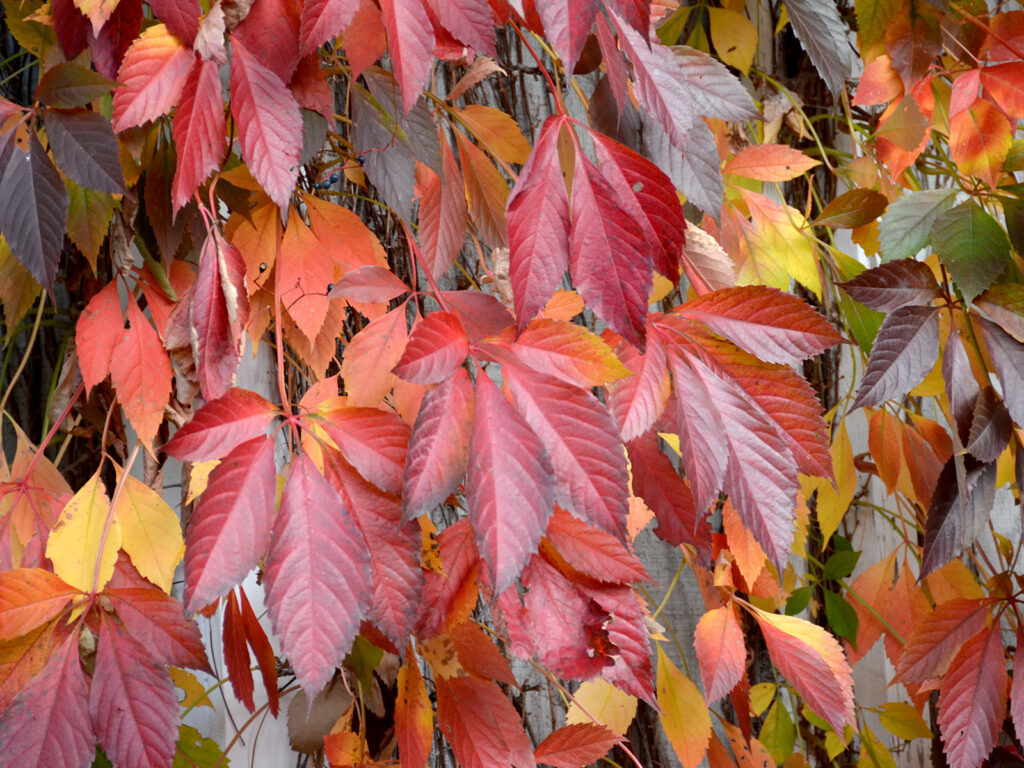
Virginia creeper has spectacular fall color — more than the equal of the garish, non-native invasive burning bush.
It’s the larval host plant of the eight-spotted forester moth that I’ve found in my yard. It’s a pretty little moth, so I hope it uses the creeper to lay more eggs.
Wildlife: Fruits for birds throughout winter
Larval host: Virginia creeper moth, eight-spotted forester, several sphinx moths (aka hummingbird moths)
Deer resistance: Moderate
- Learn more:
- Wildflower Center: Virginia creeper
- Penn State Extension: Virginia creeper identification with control
